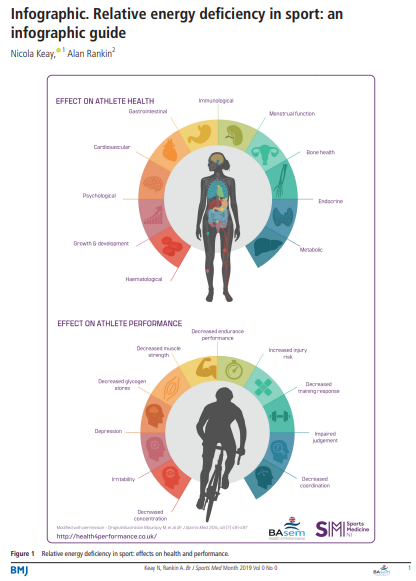As someone who grew up in a house that NEVER talked about periods / menstrual cycles, I sometimes laugh at the irony of HOW MUCH I talk about periods every day. I really mean it. It comes up weekly with the female athletes that I see. It comes up so much so that I don’t hesitate or even give the topic a second thought. I hope that continues so that my daughter feels totally comfortable talking about it as she gets older. Although, I’ll probably be the “embarrassing mom” that talks about it too openly. I can already see the eye rolls and hear the “ughh, moommmmm”s now. But, oh well. It’s a fate I’m willing to embrace if it means she’s aware of its importance and how it can be a sign and indicator of her overall health.
TOday I’m talking all about female athletes and their periods from the sports nutrition angle
I want to discuss why a female’s period becomes a focus in the work that I do and why I put such importance on it. Having a menstrual cycle is a normal function of the female body as they reach and navigate through puberty. A young female athlete should get her period by 15 years old.
Typically if a young female has reached 15 years old without ever having had a period it is termed “primary amenorrhea” and she is typically referred to a specialist to determine if something is going on in the body that has prevented her cycles from starting.
It is fairly normal for a young female athlete to reach menarche (her first period) and for her periods to be a little irregular at first. However if she gets further into her sport and you notice it stops completely and she goes months and months and months without having one, OR, it normalizes and then her training increases and she starts skipping her periods, that is not normal. Losing her period or going three months or more without it is not a badge of honor displaying what a hard core athlete she is. This is a medical condition known as “secondary amenorrhea”.
Whether the athlete is experiencing primary or secondary amenorrhea, there is reason to take a look at what might be going on. I’ve seen and research supports that it can be a cause for concern in the sports world.
Annoying BUt important
I know that having a period as a young female athlete can be VERY annoying. The cramps, the fatigue, nausea, bathroom breaks. It’s very annoying and very inconvenient. So, when we skip one or more periods or delay ever starting, we may think, “sweet, one thing I don’t have to deal with”. However, what we may not realize is that this period and regular menstrual cycle is very important for injury prevention and performance, specifically things including (but not limited to) hormone regulation like estrogen which impacts bone health.
While there can absolutely be an anatomic or endocrine issue going on, amenorrhea can also be a result of underfueling, the theme we have been covering the last couple of months. And that is what lands so many athletes in my office and why I’m so concerned with the female athlete’s cycle. What is happening here is that the athlete is demanding a very high amount of energy due to training for sport. However, she is not consuming enough energy each day for the body to cover all of the demands being placed on it between energy needs for sport, school, growth and development and daily physiological functioning (breathing, heartbeat, digestion, menstrual cycle, etc.). So, I like to explain this as:
In this state of limited energy availability (or, Low Energy Availability) the body takes an inventory of the functions not absolutely needed in the immediate present to function and it starts powering down or even shutting off those identified systems. That’s when the athlete loses her period. The body says, “I don’t absolutely need you right now to live and function and so I will power you down or turn you off for a bit until I have more energy. Right now I need to use all of this energy for this other function over here”.
my thinking when a female athlete tells me her cylces have been absent or irregular.
When a young female athlete walks into my office and tells me she has not had a period in the last 3 to 6 months or more, I get very concerned about her health, performance and risk of injury, particularly the state of her bone health. If she isn’t already seeing me with a stress fracture, I’m on heightened alert of her susceptibility to acquiring one in the near future. And, even if she is lucky and avoids a fracture, it can still put her at risk for low bone mineral density and osteoporosis later in life. Not having her cycle is also a sign that she could very likely have RED-S, which we know from my previous posts means she could be setting herself up for further complications like decreased performance, stomach issues, heightened anxiety, cardiovascular concerns, altered iron levels and more.
So, what can you take away from today’s post? Today I want to leave you with a few questions you or your athlete can ask regarding her period to determine if she is fueling well to prevent injury and perform her best…
Period check to determine if your female athlete is fueling well:
Has your athlete started her period by 15 years old?
Is your female athlete having monthly periods?
Does your athlete have regular periods EXCEPT during her sports season? For example: “I have a monthly period all year with the exception of cross country season. I lose it for 4 or 5 months and then it comes back after my season is over”.
This indicates likely underfueling in-season
Does your athlete only have her periods when injured?
This could indicate that she may be underfueling when she is fully training. When she is taken out of her sport and her activity decreases her intake is finally able to meet physiological demands and her periods resume.
Is your young female athlete struggling with or has she in the past struggled with stress fractures?
NOTE: An athlete can still experience stress fractures with regular periods and an optimal energy intake. They could be more a result of specific nutrition deficiencies. However….
Make sure to at least ask, “is she having regular periods?”
If she is not, it should be a red flag to start taking an even closer look at her fueling and working on optimizing and increasing her energy intake as soon as possible.
In my practice, stress fractures are often a result of underfueling AND certain nutrient deficiencies (not getting enough food each day = not getting enough nutrients each day)
Now, or course, a young female’s athlete’s period, or lack there of, should always be checked on by the appropriate specialist (pediatrician, OB, endocrinologist, etc.). But, today, I encourage you to not gloss over the fact, that her FUELING could be the reason for her menstrual irregularities. Or, her STRESS INJURIES could be a result of her MENSTRUAL IRREGULARITIES, which could be a result of her UNDERFUELING.
For more info on underfueling you can check out my latest posts linked below….
Much love & a well-fueled athlete,
Taylor
Oh! And, if you do feel like your young female athlete is struggling with her fueling and you need a place to start, feel free to grab a copy of my Getting Started Guide to a Well-Fueled Young Athlete!




